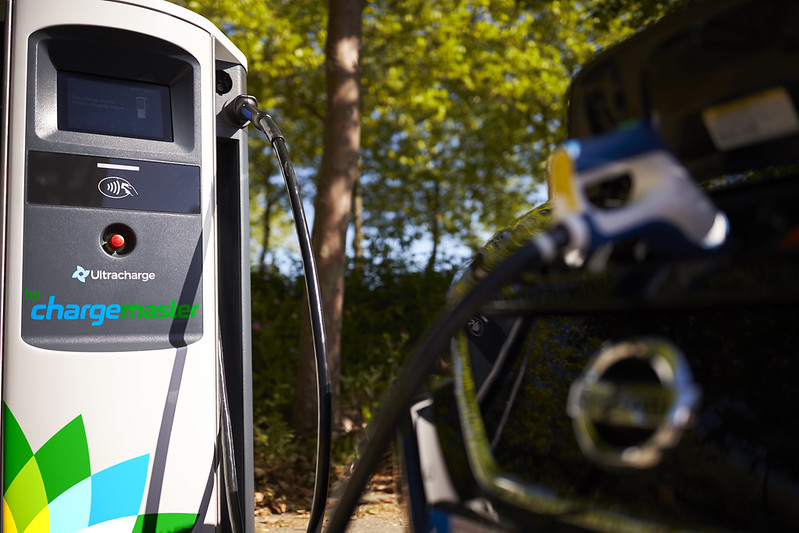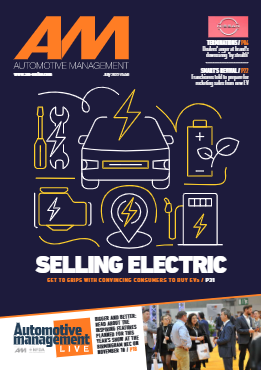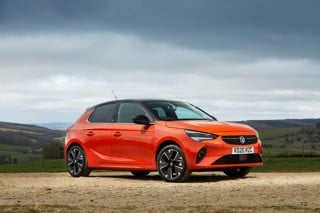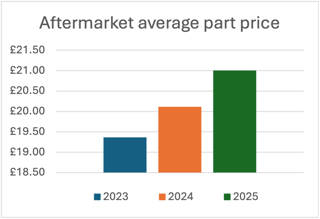The battery health of electric vehicles (EV) “must” join age and mileage as a key used car valuation metric, but new legislation might be required, it has been claimed.
Speaking ahead of a July 27 update of Auto Trader’s Road to 2030 report, brand director Marc Palmer told AM suggested it was inconceivable that an EV's available range would not play a part in its residual valuations.
But Cap HPI director of valuations Derren Martin said that efforts to gain the necessary information from OEMs was proving “difficult” and suggested that new legislation could be required to compel EV makers to share their data.
 Palmer, who recently discussed the EV market on the AM News Show podcast, said: “Consider, for example, a Nissan Leaf at 40,000 miles. One advertised car could have a battery health of 90% while another has 80%. That hugely impact the range of the car and its worth in the eyes of a well-informed consumer. At some point it will have to play a part in valuations.
Palmer, who recently discussed the EV market on the AM News Show podcast, said: “Consider, for example, a Nissan Leaf at 40,000 miles. One advertised car could have a battery health of 90% while another has 80%. That hugely impact the range of the car and its worth in the eyes of a well-informed consumer. At some point it will have to play a part in valuations.
“The way a car is charged plays a huge part, with rapid charging taking a toll on long-term battery life, but the consumer that has researched a car online and referenced its original claimed range shouldn’t have to pay the price.”
Customer care and transparency
Martin, who updated AM on used car market trends last week, said that the addition of battery health in its used vehicle valuations was emerging as a priority.
“It’s not something that most OEMs are happy to provide readily. We’re actively talking to people about it but there is a suggestion that we might need some new legislation to be passed to ensure that data is shared,” Martin said.
He added: “If your neighbour buys an identical car to you but the battery health and range of your car is 10% less, you would want to have paid less for it.”
In the current edition of AM magazine explore the effects of the shift to zero-emission vehicle sales on car retail.
Martin Miller, the founder of car retailer EV Experts, claimed that his business had formulated its own method of figuring out used EV battery range and said it prided itself in advising buyers on a car’s “real-world” range.
Miller said: “If we sold a 2016 Leaf which had a 120-mile range, you could easily sell that as a 100-mile range car. If you advertise used EVs as having the same range capacity as new you’re going to have some unhappy customers.”
Former Hyundai Motor UK president and chief executive, Tony Whitehorn, now a consultant assisting OEMs and car retailers, told AM that the bulk of battery degradation happens after the first six years of an EV’s lifecycle.
 He suggested that developments in battery production techniques – particularly the introduction of Nickel and Cobalt, along with the promise of solid-state batteries in future – were reducing the impact of degradation.
He suggested that developments in battery production techniques – particularly the introduction of Nickel and Cobalt, along with the promise of solid-state batteries in future – were reducing the impact of degradation.
But he conceded that rapid charging continued to take a greater toll on battery health and added: “EV owners need to be told that they should be charging their vehicles to 80%. Extended a charge beyond this point also has an impact on battery life.”
The way car retailers inform their customers, describe and sell cars will only become more of a divisive issue if battery health does not become a more transparent valuation metric.
Growing used EV car parc
Palmer said that, by 2025, there would be four-times as many used EVs in the UK car parc than there are today and more price-conscious potential buyers have yet to enter the market.
Around one-in-five Auto Trader searches are now for an EV, which is four times higher than it was a year and a half ago, Palmer said. But he added: “We have not seen any shift in the demographic of people looking at those cars. What we want to see is more mainstream buyers with normal budgets looking at EVs, but that’s not happening.
“Demand is principally still being driven by the wealthy. That’s probably no surprise given the sticker price of EVs.”
Palmer said that 36% of views on Auto Trader are for cars under £30,000. At that value potential customers have a choice of 175 different petrol and diesel car models to choose from, but just 26 EVs.
Price parity, which Palmer believes could be achieved between 2024 and 2026, should bring significant running cost savings for EV owners.
Palmer said that the soaring cost of petrol and diesel had seen a previous running cost reference point of around £140 per 1,000 miles had accelerated to £176 more recently.
But he added: “Unfortunately that isn’t because the EVs are getting cheaper.”


















Login to comment
Comments
No comments have been made yet.